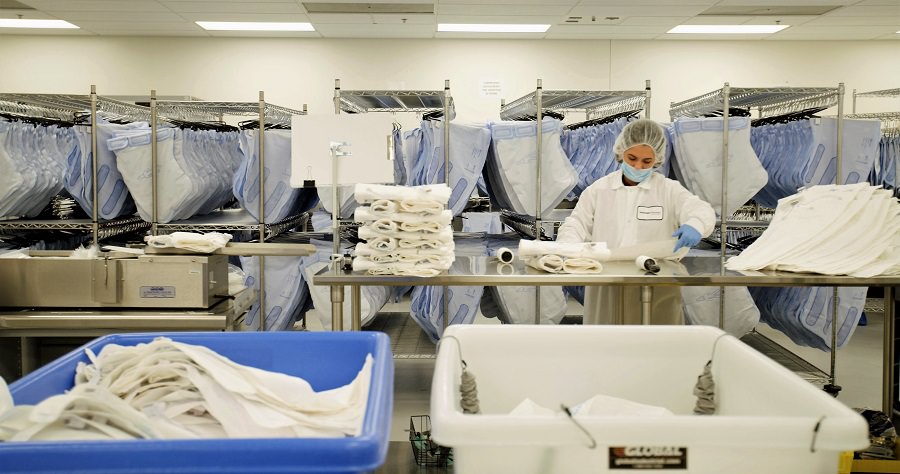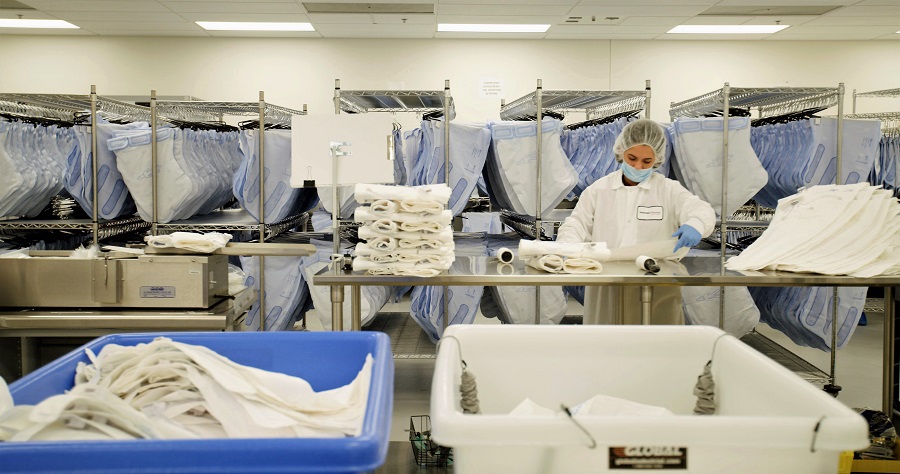Reusing medical devices labeled as single-use sounds sketchy. Especially in the time of COVID, when the sharing of anything seems like a sure route to disaster. But it has an important role in lowering medical costs and reducing the carbon footprint of healthcare.
Medical waste is a big problem, and it’s gotten even worse throughout the pandemic. Enter a little-known green healthcare industry created specifically to reduce costs for hospitals – reprocessing. It’s an industry that could prove vital in the fight against climate change.
Expanding the Definition of Single-Use Medical Items
If hospitals were a country, they would be the fourth largest source of pollution, according to Health Affairs, a leading journal of health policy thought and research. Think about how many millions of pieces of personal protective equipment healthcare professionals don and discard every day. And that is only a fraction of the materials they use daily. The solution, for some experts, is simple: Reprocess “single-use” medical devices and eliminate over 7,100 tons of waste and then some.

What kind of single-use items are we talking about reprocessing? Face masks? Gloves? In a healthcare setting? Not so much. But there are plenty of items labeled single-use that have a much longer viable life span. These include surgical instruments like trocars, cardiovascular intra-aortic balloon pumps, coronary angioplasty catheters, blood pressure cuffs, biopsy forceps, pulse oximeter sensors, and disposable medical scissors.
According to the CDC, reprocessors are considered manufacturers. Their processes are designed to prevent cross-contamination and assure that medical devices are safe and effective for reuse. Reprocessors are regulated in the same manner as original manufacturers and must comply with the same regulatory requirements of the device when it was first created.

Regulated reprocessors clean and sterilize hundreds of thousands of medical devices labeled “for single-use” to help hospitals reduce waste and lower costs. Pictured: Worker inspects compression sleeves. Photo: Association of Medical Device Reprocessors
Is It Possible to Create a Circular Economy in Medicine?
A solution recommended by academics from Yale and other institutions to lower costs and – most importantly – reduce pollution from medical waste, is to reverse engineer single-use medical devices. This practice has been regulated by the FDA for over 20 years. However, its availability outside of the industry is not widely known. And only a small portion of the devices that could be reprocessed actually are. Nevertheless, in those two decades, the reprocessing industry has doubled in size, on average, for each of those years, now saving 15 million pounds of medical waste from landfills and reducing costs to hospitals and surgical centers by over $544 million.
The Association of Medical Device Reprocessors (AMDR) represents the global interests of regulated reprocessing companies. They collect annual member data to show waste diversion and savings to hospitals as a direct result of the work of their members. AMDR reports that over 8,000 hospitals use regulated, reprocessed single-use medical devices, also minimizing astronomical waste hauling fees. In fact, 100% of U.S. News & World Report top hospitals used reprocessed single-use medical devices in 2019.
Reprocessing companies collect, sort, clean, disinfect, test, sterilize, and return millions of devices to thousands of hospitals, for a cost savings of 30 to 40% when compared to an investment in new devices. The reprocessed equipment is just as safe and effective as original items and allows hospitals more bandwidth to control their supply chain and prepare for future threats. According to AMDR, over 15 million pounds of medical waste were diverted from landfills in 2019 thanks to the use of reprocessed single-use medical devices.
Your Contribution to Medical Waste
We live in a disposable healthcare culture and the environmental consequences are dire. Incineration of healthcare waste leads to pollutants in the air that can make people sick, further burdening the healthcare system.
In our pandemic world, we are all contributors to medical waste. Masks, gloves, hand sanitizer bottles, and other coronavirus waste are already washing up on beaches and being found on seabeds. It can be expected that about 75% of used masks and other pandemic-related waste will end up in landfills or floating in the seas. OceansAsia predicts that over 1.56 billion face masks used in 2020 will make their way into the planet’s oceans.
The Path to a Circular Economy
Healthcare systems generate significant amounts of air pollution and greenhouse gas emissions, the majority of which comes from the supply chain, according to an analysis published in Health Affairs.
The coronavirus has shone a light on the vulnerabilities in the healthcare supply chain and forced a need for a more resilient and cost-effective healthcare system. As Health Affairs reports, there is an over-reliance on single-use medical devices.
Keeping medical devices in circulation for as long as they are viable before disposal will take a weight off the massive amounts of medical waste produced daily and drive a circular economy.
Feature image courtesy of Association of Medical Device Reprocessors
The post Recycling Medical Equipment To Reduce Medical Waste appeared first on Earth 911.








